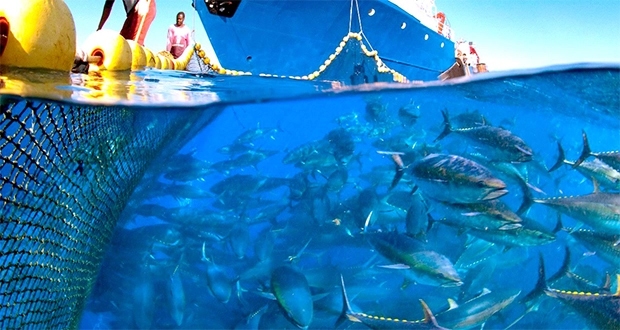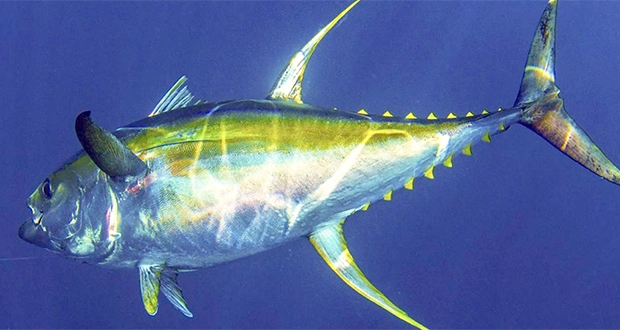Publicité
As coastal states chalk up win at IOTC, where does Mauritius stand?
Par
Partager cet article
As coastal states chalk up win at IOTC, where does Mauritius stand?

Coastal states in the Indian Ocean have managed to push through restrictions on the use of fish aggregating devices by European fishing fleets at the Indian Ocean Tuna Commission (IOTC). The fight at the IOTC puts Mauritius in an uncomfortable position. How does the IOTC decision affect our country?
1) The victory for coastal states
Following three days of stormy talks at the 30-member Indian Ocean Tuna Commission (IOTC), a proposal by 11 coastal states of the region succeeded in pushing through restrictions on the use of fish aggregating devices (FADs) by foreign fishing fleets, widely blamed for helping decimate tuna stocks in the Indian Ocean. “This was a significant meeting,” says Umair Shahid, Indian Ocean Tuna lead at the World Wide Fund for Nature (WWF).
This was a decision that was almost not taken. For the last two years, Kenya has been pushing to reduce the legally permissible number of drifting FAD devices carried on each ship down from the current limit of 300 to 150. However, at the IOTC sixth special session to discuss FAD limits last weekend, the Kenyan government abruptly withdrew its proposal, leaving Indonesia and 11 other coastal states to come up with an alternative proposal. What the latter managed to push through was introducing a phased reduction in the use of FADs down from 300 to 250 initially, before eventually bringing it down to 200 by 2026. That’s bad news for European – primarily French and Spanish fishing ships – that are the biggest users of FADs in their tuna fleets.
Starting in the early 1990s, purse seiners began using FADs, which enormously improved tuna catch rates – before FADs were introduced foreign purse seiners were catching an annual average of between 20,000 and 60,000 metric tonnes in the Indian Ocean; after FADs that number jumped to an average of 400,000 tonnes by 1993. And coastal states have blamed European and East Asian purse seiners using FADs of overfishing tuna in the region bringing yellowfin tuna to the brink of population collapse and turning bigeye tuna into an overfished species according to the IOTC. In 2020, the EU fishing fleet caught 217,000 tonnes of tuna in the Indian Ocean – 69 per cent by Spain, 28 per cent by France and the remaining three per cent by Italy and Portugal – mostly skipjack, yellowfin and bigeye tuna, with the EU fleet estimated to account for 60 per cent of yellowfin fishing in the Indian Ocean.
In response, the EU blames growing coastal fishing fleets and their unwillingness to set radically lower catch limits for overfishing in the region. The dividing line is not just between foreign and coastal states, but also within the fishing industry – states using pole and line technology have eagerly backed restrictions on states with purse seiners using FADs. Martin Purves, Managing Director of the UK-based International Pole and Line Foundation, welcomed the IOTC decision in a statement: “The new measure on harmful drifting FADs will have a significant impact on controlling the damage caused by industrial purse seine tuna fleets.”
FADs have also been accused of helping push yellowfin tuna to the brink of biological collapse in the region since their use to catch skipjack nets an average of 25 per cent of by-catch (species not intended to be caught), more than 90 per cent of which are juvenile yellowfins schooling with similarly-sized adult skipjack, threatening the ability of an alreadyoverfished yellowfin population to reproduce itself. The proposal on FAD limits pushed through by coastal states was much deeper than the EU, which proposed a reduction of the maximum number of FADs from 300 to 280 by 2024, and eventually 260 by 2026. The proposal from Indonesia and the other coastal states was a compromise position: much higher than that floated earlier by Kenya, but lower than that proposed by the EU. “Yellowfin and bigeye tuna are in the red. A 33 per cent reduction in the use of FADs until 2026 is an important step in the right direction,” says Shahid.

2) Traceability and temporary bans
The IOTC decision also places restrictions on FAD use in two other ways; firstly, it mandates the creation of a FAD registry to prevent the problem of abandoned drifting FADs. Conservation groups estimate that up to 80 per cent of FADs are simply abandoned at sea, either washing up on beaches in the region, damaging coral reefs or entangling other species such as sharks and turtles. “Tracing who FADs belong to will allow for better recovery of FADs and will help reduce damage to coral reefs and high shark mortality by tightening up FAD management,” says Shahid.
But the following proposal is the most far-reaching: a 72-day prohibition on the use of drifting FADs within the Indian Ocean by 2024. This is the proposal that got the most opposition from the EU and Asian fishing fleets. This too was a climbdown from another proposal put forward by India that called for a total and indefinite moratorium on FAD use by 2024 linking abandoned FADs to contributing as much as 225,720 metric tonnes of plastic debris scattered in the Indian Ocean between 2016 and 2020. A temporary seasonal closure of FAD use was backed by European retailers last year.
However, the Indonesian proposal contained a carve-out for small island states such as Mauritius and Seychelles, dependent on fish supplied by European ships: the annual temporary prohibition on FAD use would only apply to the high seas and not within their own territorial waters. “This is a major win that will reduce juvenile mortality in yellowfins. It’s been a decade since yellowfins were found to have been overfished, and these proposals could bring all stakeholders aboard,” argues Shahid.
Except that it hasn’t and given that the limits on FAD use affect the EU’s fleet most of all, the threat of it objecting and refusing to implement the IOTC’s decision is not far off. Anne-France Mattlet, Director of Europêche Tuna Group, slammed the IOTC decision stating that it “will threaten the whole EU long-distance tuna fleet and the purse seine dependent economies of the region. Can it be other than a geopolitical issue? We are strongly asking the EU to challenge this decision, in line with the affected developing countries, to save the purse seine fleet and support its developing partner states. The contrary will hand over our tuna supply to non-EU fleets and foreign interests”. The International Seafood Sustainability Foundation, a grouping of the EU fishing industry, also came out against the IOTC decision. If the EU’s objection to the IOTC is to come, it will be in May this year when Mauritius plays host to an IOTC session and it will be the first time that the EU would be objecting and refusing to implement a decision of a multilateral regional fisheries management organization.

3) The Mauritian position
The IOTC decision has also been opposed by Mauritius and Seychelles; seafood exports account for a quarter of its exports and are linked to 8,000 direct jobs. Although collapsing tuna stocks is an existential threat to the industry, so is the prospect of EU fishing fleets not supplying its canneries with enough tuna. Fishing agreements signed with the EU only allow tuna sourced from European vessels, or European ships carrying the Mauritian or Seychellois flag, to be exported to European markets. Although the Indonesian-led proposal was backed by states such as Bangladesh, India, Pakistan, Madagascar, Malaysia, Maldives, Mozambique, South Africa, Sri Lanka and Australia, Mauritius along with Seychelles and Comoros backed the EU position. At the meeting, the Mauritian side argued that “Mauritius is not a big fishing nation yet. It’s a processing nation. For that Mauritius needs raw material. The purse seine fishery contributes 20,000 jobs and guarantees access to the EU market, which brings good opportunities to Mauritius to enhance its economy”.
Mauritius is quite sensitive to anything disrupting tuna supply from EU boats: in the brief heyday of Somali piracy in the region that saw 20 attacks on purse seiners between 2007 and 2010 that led to the EU cutting down on fishing activity, canneries in Mauritius were worried that the lack of fish being supplied by EU boats would potentially lead to the closure of canneries on the island. That led the local seafood export industry to back a hard line on Somali piracy. The problem for Mauritius, however, is not necessarily limits on the number of FADs allowed on EU ships themselves; back in 2014 the Mauritian government itself proposed cutting down the maximum number of FADs on each ship down to 200 immediately – much higher than the 250 limit imposed by the IOTC today. But rather the idea of closing off FAD use in international waters for 72 days each year, which the EU and the Mauritian government argue will disrupt tuna supply to its canneries.
With coastal states in the region backing limiting FAD use by European fishing fleets in a bid to combat tuna overfishing in the Indian Ocean, it remains to be seen whether Mauritius will stick to its opposition when it plays host to the IOTC later this year.
Publicité
Publicité
Les plus récents






